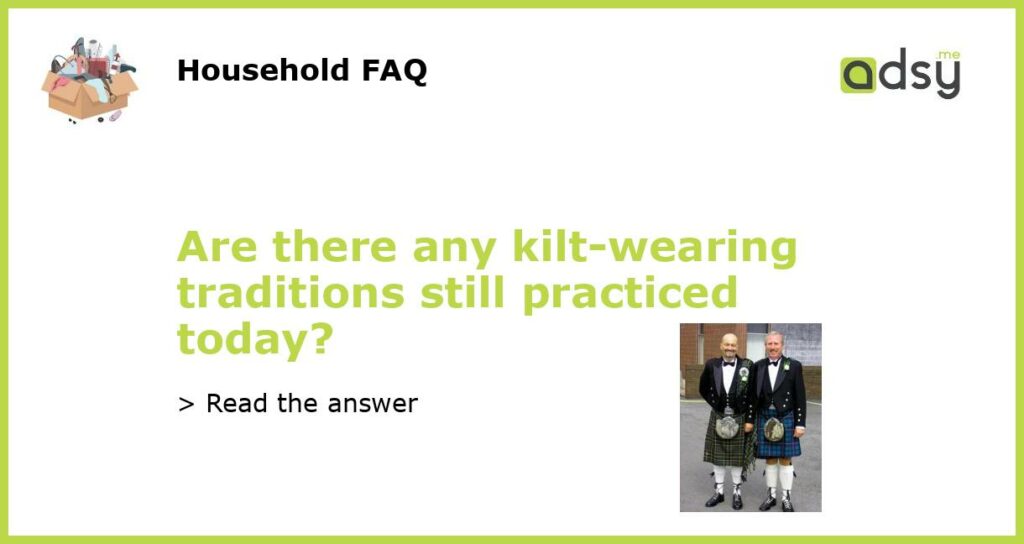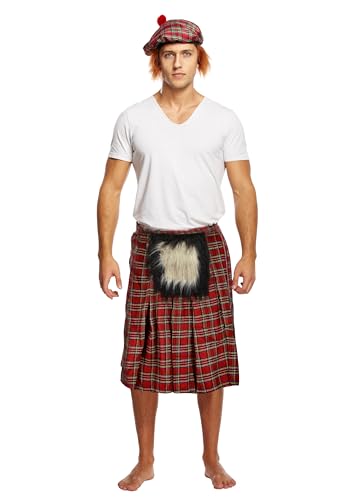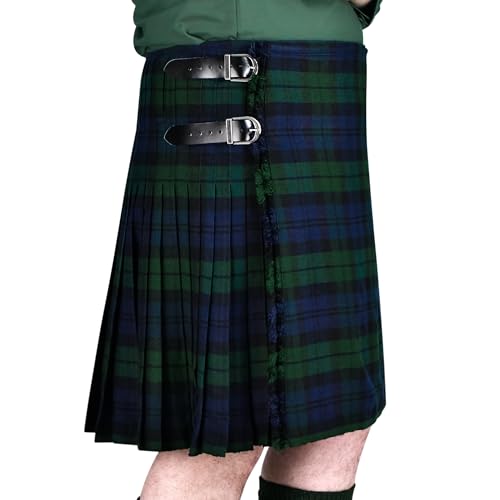The Timeless Appeal of Kilts
Kilt, Scotland’s national dress, commands attention with its bright tartan pleats, sporran, and elongated jacket. With its Scottish root, it is known as a symbol of strength, pride, and community. The attire, however, is not merely an emblem of cultural identity or a costume; it also carries a rich history with various traditional practices. In this article, we explore whether these practices are still observed today.
The Scottish Game Tradition and Kilts
Games are a crucial aspect of Scottish culture and traditions. They often involve impressive physical strength and endurance and are held throughout Scotland in a variety of locales. One of the most well-known events is the Highland Games. Athletes compete in traditional competitions such as caber toss, stone put, and hammer throw, to name a few. The Scottish athletes participating in these games often wear kilts as part of their attire, emphasizing the traditional nature of the Highland games. While not mandatory, kilts are an essential aspect of Scottish game tradition, and many participants still wear them today.
The Scottish Military and Kilts
Scotland has a long-standing military tradition, and kilts have been a part of it for centuries. Today, kilts are mostly worn by ceremonial groups such as the Royal Regiment of Scotland and the Scots Guards. The uniform consists of a kilt, sporran, tunic, glengarry hat, and hose with flashes. These military kilts are similar to traditional kilts, but they have a darker color scheme, which makes them unique. The Scottish military has a historical significance associated with kilts, which makes it an essential tradition still practiced today.
Kilts and Scottish Weddings
Scottish weddings offer another important opportunity to wear kilts. Grooms often don kilts to exemplify their Scottish heritage and family roots. Each clan has a distinct tartan, and the groom and the wedding party generally dress in the clan’s tartan. Kilts are also worn by the father of the bride, best man, ushers, and ring bearer. Throughout the service, the kilts provide a colorful visual accompaniment. At weddings, kilts are not worn to practice any older traditions, but they represent the bride and groom’s familial heritage and are an essential part of the Scottish wedding ceremony.
Scottish Dancing and Kilts
Scottish dancing is another important tradition that started long ago in Scotland. The dancers dress in colorful kilts, which are an essential part of their attire. While Scottish dancing is mainly associated with competitions and festivals, they are still held today and feature a mix of traditional and modern musical accompaniments. Moreover, the colorful kilts and costumes add to the visual appeal of these events, and this tradition is still practiced today.
Kilts and Scottish Culture
The kilts’ traditional practices are still very much in existence today, and they are an essential part of Scottish culture. Whether it is military dress, Scottish weddings, or athletic competitions, the kilt remains an iconic and vital symbol of Scottish heritage. Although kilts have evolved over the years, their basic design has remained consistent, and wearing it today is just as much about honoring the past and respecting traditions, as it is a celebration of Scottish culture and a symbol of national pride.





![The Dragons Den Adults Tartan Kilt With Sporran Scotsman Scottish Scotland Patriotic Fancy Dress Costume Accessory [L-XL]](https://m.media-amazon.com/images/I/51VAUbEnCwL.jpg)
